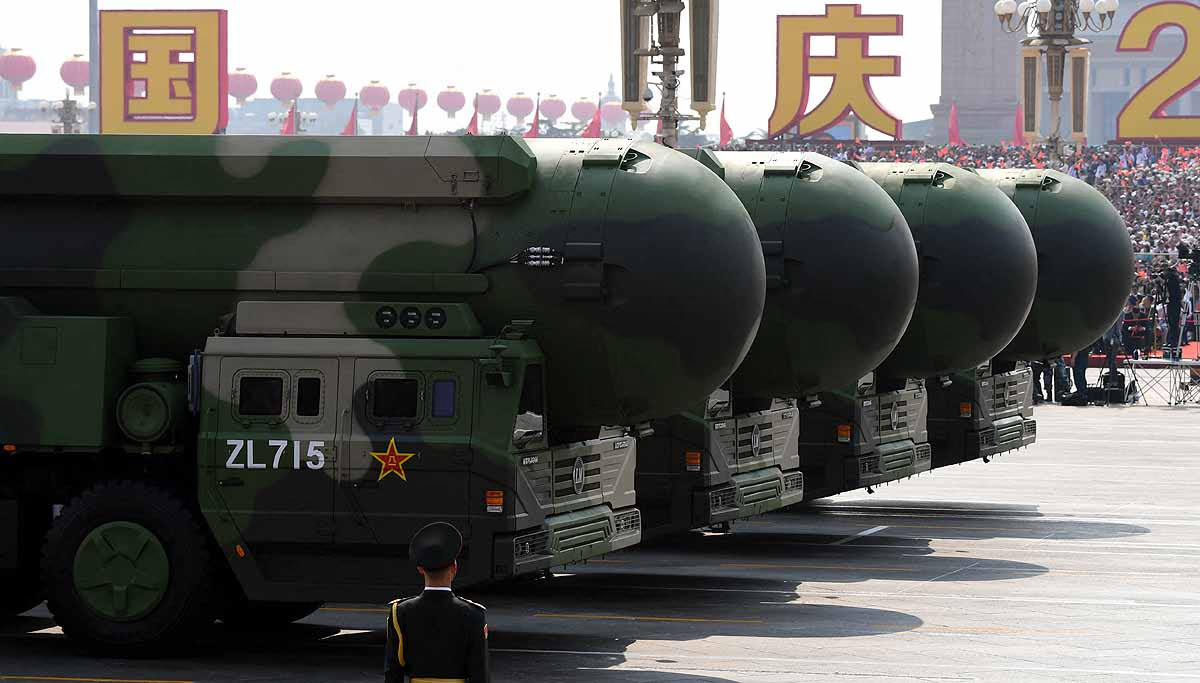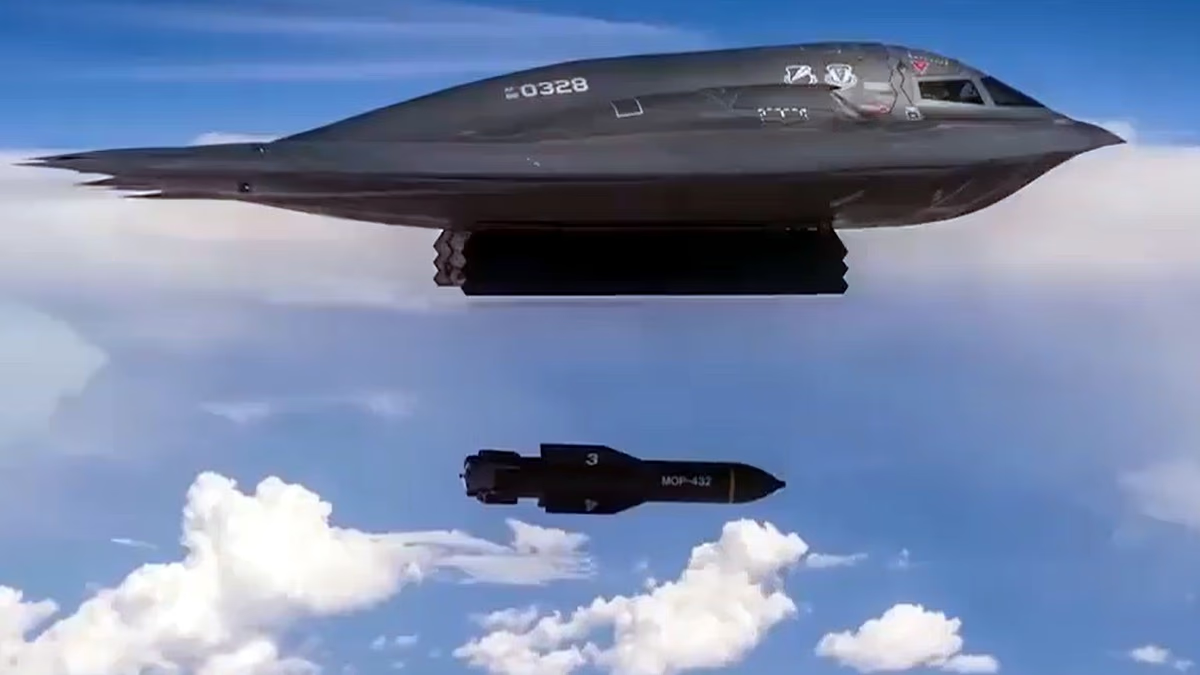In Operation Midnight Hammer, the United States carried out precise attacks on Iran’s nuclear sites in Fordow, Natanz, and Isfahan, causing tensions in the Middle East to escalate. The pressing question now is whether China, Iran's largest trading partner and oil buyer, will intervene militarily for Iran, located 5,000 kilometers away.
Does the People’s Liberation Army (PLA) have the capacity to project power over such a distance? Let’s explore China's military strength. Can China militarily assist Iran amidst this crisis?
China-Iran relations: Why does this question matter?
China and Iran have a 25-year strategic cooperation agreement (2021) covering energy, trade, infrastructure, and military cooperation.
Oil Trade: Iran supplies approximately 2 million barrels of oil per day to China, accounting for 15% of its oil imports. About 90% of Iran's oil exports go to China, often via "dark fleet" tankers to evade Western sanctions.
Strategic Partnership: Iran is a key partner for China in reducing American influence in the Middle East.
Military Collaboration: China has supplied Iran with missile technology, drone parts, and rocket fuel.
Following Operation Midnight Hammer, where the US utilized 7 B-2 stealth bombers and 125 aircraft to attack Iran's nuclear sites, the question arose: Will China provide military support to Iran?

Source: aajtak
China’s Military Strength: A Comprehensive Analysis
The People’s Liberation Army (PLA) of China is one of the world’s largest armies, comprising 2 million active soldiers, 1 million reserve forces, and advanced weaponry. But can this force effectively intervene 5000 km away in the Middle East? Let's examine the strengths and limits of the PLA.
1. Structure and Capability of the PLA
Ground Force (PLAGF)
Personnel: 970,000 active personnel.
Armament: 7,000 tanks (e.g., Type-99A), 35,000 armored vehicles, and 12,000 artillery units.
Role: Primarily oriented towards regional defense (like Taiwan, India border) with logistics limitations for deployment in remote regions like the Middle East.
Navy (PLAN)
Fleet: 425 ships, including 3 aircraft carriers (Liaoning, Shandong, Fujian), 72 submarines, and 150 warships.
Missiles: DF-21D and DF-26 "Carrier Killer" ballistic missiles capable of destroying naval targets up to 1800-4000 km.
Capability: PLAN is increasing its presence in the Indian Ocean, but it has only one small overseas base (Djibouti) surrounded by Western bases.
Air Force (PLAAF)
Aircraft: 3200 aircraft including 600 stealth J-20 fighter jets, 400 J-16s, and 250 bombers (H-6K).
Missiles: PL-15 air-to-air missiles (200 km range) and CJ-20 cruise missiles.
Constraint: Limited long-range deployment due to only 50 aerial refueling tankers, insufficient for large-scale operations 5000 km away.

Source: aajtak
Rocket Force (PLARF)
Missiles:
2,000 ballistic and cruise missiles, including DF-41 ICBM (12,000 km range) and hypersonic DF-17.
Role:
Capable of targeting regional and global locations, but requires complex logistics for deployment in the Middle East.
Cyber and Space Force
The PLA's cyberwarfare capabilities are advanced, able to jam radar and communications. It has 400 satellites for surveillance and guidance. Indirect support (such as intelligence sharing) is possible, but direct combat impact is limited.
2. Arms Sales and Technical Support
Supplying Iran:
China has provided Iran with C-802 anti-ship missiles, Qader missile technology, and drone engines. In 2025, it supplied 1,000 tons of sodium perchlorate (rocket fuel), enough to create 260 Khaibar Shaken missiles.
Recent Discussion:
Some experts believe that if Iran had purchased Chinese HQ-9 or J-35 fighter jets instead of Russian S-300, it might have better countered Israeli attacks.
Limitation:
China has refrained from supplying Iran with advanced weapons (like PL-15 missiles) to avoid international sanctions and conflict with the US.
3. Overseas Military Bases and Logistics
Djibouti Base:
The PLA's only overseas base, with 2,000 personnel and small ships, is 3,000 km away from the Middle East and surrounded by US, French, and Japanese bases.
Logistical Challenges:
A military campaign 5,000 km away requires large-scale sea and air logistics, which are currently inadequate. Some users on platform X point out that China's military is a "near-shore defensive force," vulnerable to conflicts away from the sea.

Source: aajtak
4. Military Budget and Technological Advances
Budget: In 2025, China’s military budget is $296 billion (SIPRI), less than the US ($877 billion) but notably more than Russia ($84 billion).
Technology: China has developed hypersonic missiles, stealth jets, and AI-based warfare systems, though they remain untested in combat.
Constraint: The global power projection capability of the PLA is weaker compared to the US (800 foreign bases).
Will China Intervene for Iran?
Arguments for intervention
Economic Interests:
Oil supply from Iran is crucial for China’s energy security. If Israel or the US attacks Iran's oil refineries, China's economy could suffer. There's a risk of the closure of the Strait of Hormuz, from where half of China's oil imports occur.
Strategic Partnership:
China views Iran as a proxy against American influence. In 2023, China mediated a peace agreement between Iran and Saudi Arabia, enhancing its regional influence.
Military Supply:
Three Boeing 747 cargo planes from China to Iran in recent months instigated speculation about military supplies (such as drones or radar parts), although it remains unconfirmed. Some users on platform X claim China could send "40 ships, 200 cargo planes, and 1,000 trucks" with weapons to Iran, but this seems improbable.
Arguments against intervention
Limited Military Capacity:
The global power projection capacity of PLA is limited. A military operation 5,000 km away requires large-scale naval and air support, which the PLA lacks. China's military is inexperienced in foreign wars and lacks overseas bases.
Non-Intervention Policy:
China's foreign policy is based on "non-intervention," avoiding foreign wars. China will likely focus on diplomatic statements and economic assistance (such as oil purchases) rather than military support.
Risk of Confrontation with the US:
Military intervention might lead to conflict with the US and Israel, potentially harming China's economy, which relies heavily on the US. Retired Brigadier General John Teichert noted that China lacks the capability for a military display of power in the Middle East due to surrounding US bases.
Diplomatic Stance:
Chinese President Xi Jinping condemned Israeli attacks and called for a ceasefire, but gave no indication of military support. Foreign Ministry spokesperson Guo Jia Kun stated that China "will work for peace through the United Nations."

Source: aajtak
Expert Opinions
Low Probability of Military Intervention:
William Figueroa (University of Groningen) believes China’s non-intervention policy and military limits will deter it from direct warfare in Iran. Zhu Zhao Yi (University of International Business, Beijing) stated China can only exert pressure through the UN Security Council.
Economic and Diplomatic Support:
China purchases 90% of Iran's oil, accounting for 20% of Iran’s economy. By continuing these purchases, China can economically support Iran. Under the Belt and Road Initiative (BRI), China can promote infrastructure projects in Iran, such as the Xi’an-Tehran railway.
Subtle Support:
Some experts suggest China might provide dual-use technologies, like drone technology, cyber intelligence, or radar parts to Iran, aiding without direct military intervention.
China’s Potential Strategy
Based on expert insights and current conditions, China’s potential strategy may include...
Diplomatic Pressure: Using the UN and the Shanghai Cooperation Organization (SCO), China will likely condemn actions by Israel and the US, possibly proposing a ceasefire with Russia.
Economic Support: By increasing oil purchases from Iran and paying in yuan, China may help avert Iran's economic crisis.
Limited Military Assistance: Supply of J-35 fighter jets, HQ-9 air defense systems, or drone parts may increase, but China will likely avoid supplying advanced weaponry.
Expanding Regional Influence: China could leverage this crisis to bolster its diplomatic stance in the Middle East, as seen in the 2023 Iran-Saudi agreement.
China’s People’s Liberation Army is among the world’s most powerful, yet its capacity for military intervention 5000 km away in the Middle East is limited. The PLA’s navy and air force are designed for regional conflicts (e.g., Taiwan or the South China Sea) rather than global power projection. Moreover, China’s non-intervention policy and fear of confrontation with the US hinder direct military action.




